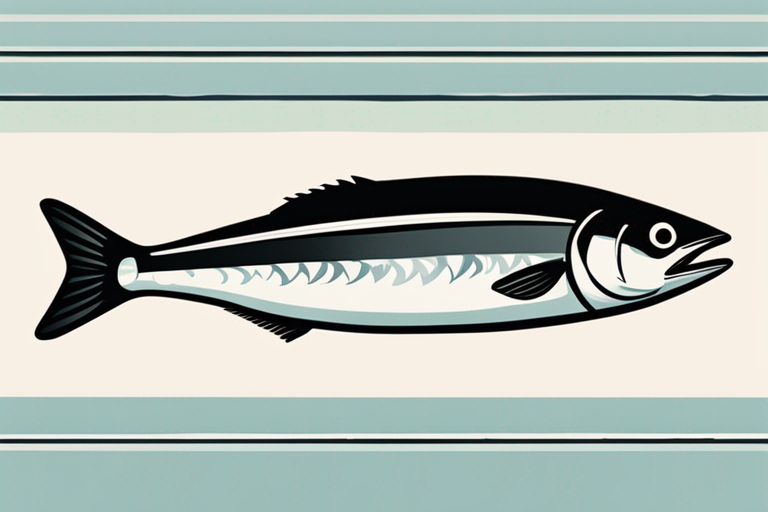
How to Tell if Atlantic Mackerel has Gone Bad
Get Your Free Food Safety Cheat Sheet
30 most common foods with instant answers. Print it and stick it on your fridge—completely free!
How to Tell if Atlantic Mackerel has Gone Bad
Atlantic mackerel is a popular and nutritious fish, known for its rich flavor and abundance of omega-3 fatty acids. However, like all seafood, it is important to ensure that the Atlantic mackerel you consume is fresh and safe to eat. In this article, we will discuss how to tell if Atlantic mackerel has gone bad and provide you with practical tips to ensure food safety. (Atlantic mackerel)
Signs of Spoiled Atlantic Mackerel
When it comes to determining if Atlantic mackerel has gone bad, there are several key indicators to look out for. Here are some signs that your Atlantic mackerel may have spoiled:
1. Unpleasant Odor
- Fresh Atlantic mackerel should have a mild, oceanic smell. If the fish emits a strong, fishy odor or smells sour, ammonia-like, or rotten, it is likely spoiled.
2. Changes in Color and Texture
- Fresh Atlantic mackerel typically has a shiny, iridescent skin and firm flesh. If the skin appears dull, discolored, or slimy, or if the flesh feels mushy or slimy to the touch, it may be a sign of spoilage.
3. Presence of Mold or Discoloration
- Mold growth, dark spots, or discoloration on the skin or flesh of the Atlantic mackerel are clear signs of spoilage and should be avoided.
4. Expiry Date
- Check the expiration date on the packaging or ask your fishmonger for the sell-by date. Consuming Atlantic mackerel past its expiration date can pose health risks.
5. Unusual Taste
- If the Atlantic mackerel tastes off, bitter, or significantly different from its usual flavor, it is best to discard it.
Tips for Ensuring Food Safety
To ensure that you are consuming safe and fresh Atlantic mackerel, here are some practical tips to keep in mind:
1. Purchase from a Reputable Source
- Buy Atlantic mackerel from a trusted fish market, grocery store, or fishmonger known for their quality seafood products.
2. Check for Freshness
- Look for signs of freshness such as clear eyes, red gills, and a firm texture when purchasing Atlantic mackerel. Avoid fish that appears dull, discolored, or has an unpleasant odor.
3. Proper Storage
- Store Atlantic mackerel in the refrigerator at temperatures below 40°F (4°C). Use it within 1-2 days of purchase to ensure optimal freshness.
4. Avoid Cross-Contamination
- When handling Atlantic mackerel, use separate cutting boards, utensils, and containers to prevent cross-contamination with other foods.
5. Cook Thoroughly
- Cook Atlantic mackerel thoroughly to an internal temperature of 145°F (63°C) to kill any potential bacteria or parasites.
Conclusion
In conclusion, it is essential to be vigilant when it comes to assessing the freshness of Atlantic mackerel to prevent foodborne illnesses. By understanding the signs of spoilage and following proper food safety practices, you can enjoy this delicious fish with peace of mind. Remember to trust your senses and when in doubt, it's always better to err on the side of caution and discard any Atlantic mackerel that appears questionable. Stay informed, stay safe, and enjoy your seafood responsibly! (Atlantic mackerel)

Authoritative Food Safety References
These agencies and university labs inform every tip and health precaution we publish.
USDA FoodKeeper – Cold Storage Guidelines
Official refrigerator, freezer, and pantry timelines maintained by the U.S. Department of Agriculture.
Visit USDA FoodKeeperFDA Produce Safety Rule & Grower Guidance
Field-to-fridge handling practices that prevent contamination of fruits, vegetables, and leafy greens.
Visit FDA Produce SafetyCDC Foodborne Illness Prevention Hub
Surveillance-backed guidance on pathogens, symptoms, and steps to reduce foodborne illness risk.
Visit CDC Food SafetyUC Davis Postharvest Technology Center
University research detailing optimal storage atmospheres for produce after harvest.
Visit UC Davis PostharvestPenn State Extension – Home Food Preservation & Safety
Peer-reviewed extension bulletins on safe canning, chilling, and reheating practices.
Visit Penn State ExtensionQ: Can I eat Atlantic mackerel after the expiration date?
Q: How should Atlantic mackerel be stored to prevent spoilage?
Q: Can I freeze Atlantic mackerel to extend its shelf life?
Q: What are the potential health risks of consuming spoiled Atlantic mackerel?
Get Your Free Food Safety Cheat Sheet
30 most common foods with instant answers. Print it and stick it on your fridge—completely free! Want more? Upgrade to the complete guide with 70+ foods.
Scan your food directly and get instant safety info using our AI-powered camera feature.